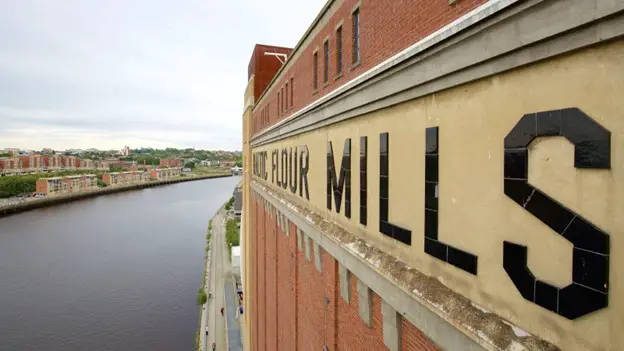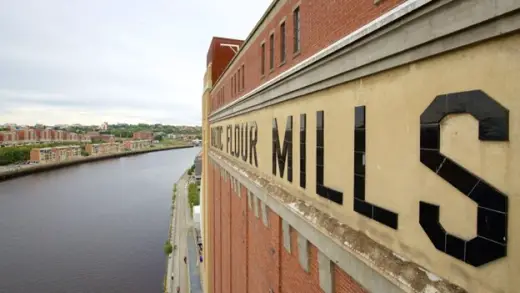Newcastle Upon Tyne architecture: Shaped by industrial heritage, Tyneside architecture style guide
Newcastle upon Tyne Architecture: Shaped by Industrial Heritage
22 Mar 2023
One interesting perspective to explore the architecture of Newcastle upon Tyne is to look at how it has been shaped by the city’s industrial heritage
During the Industrial Revolution, Newcastle became a major center for coal mining and manufacturing, and this had a significant impact on the city’s architecture. Many of the city’s buildings, particularly those in the city center, were built during the 19th and early 20th centuries and were designed to serve the needs of industry.
Newcastle shaped by industrial heritage guide
Let’s explore this perspective to look at the architecture of the city’s warehouses, which were built to store and transport goods like coal, iron, and timber. Some of these warehouses have been repurposed for new uses, such as the BALTIC Centre for Contemporary Art, which is housed in a former flour mill.
The warehouses of Newcastle upon Tyne played a vital role in the city’s industrial development, particularly during the 19th and early 20th centuries. These buildings were constructed to store and transport goods like coal, iron, timber, and other materials that were essential to the city’s economy. The warehouses varied in size and design, depending on the type of goods they were built to store.
Many of the city’s warehouses were built along the River Tyne, which provided a convenient way to transport goods to and from the city. The river was also important because it allowed ships to transport coal and other materials directly to the warehouses, which could then be loaded onto carts or trains for further transportation inland.
The warehouses of Newcastle upon Tyne are characterized by their robust construction and practical design. Many of them were built using brick, which was a durable and affordable material. Some warehouses were designed with large windows to allow natural light to enter the building, while others had loading bays that allowed carts and trucks to drive directly into the building to unload or load goods.
One of the most famous warehouses in Newcastle is the BALTIC Centre for Contemporary Art. The building was originally built in the 1950s as a flour mill and was later converted into a warehouse. It was used to store materials like grain, animal feed, and fertilizer until the 1980s when it was decommissioned. The building stood derelict for many years before it was transformed into a contemporary art center in 2002.
Another notable warehouse in Newcastle is the Bonded Warehouse, which is located on the Quayside. The building was constructed in the 19th century and was used to store goods that were subject to excise duty, such as tobacco and alcohol. The building’s thick walls and heavy doors were designed to prevent theft and ensure that the goods stored inside remained secure.
Today, many of Newcastle’s historic warehouses have been repurposed for new uses, such as restaurants, bars, and offices. These buildings serve as a reminder of the city’s industrial past and provide a unique setting for modern businesses and entertainment venues.
The influence of industrial architecture on modern architecture in the city.
The industrial architecture of Newcastle upon Tyne has had a significant influence on modern architecture in the city. Many of the city’s modern buildings, particularly those built in the 21st century, have been designed to reflect the city’s industrial heritage and pay homage to its past.
One example of this influence can be seen in the design of the Sage Gateshead music center. The building, which was completed in 2004, was inspired by the shape of the city’s coal staithes, which were used to load coal onto ships. The building’s curved roof and steel frame are reminiscent of the industrial architecture of the city, while its glass facade reflects the River Tyne and the surrounding landscape.
Another example of how industrial architecture has influenced modern design in Newcastle can be seen in the design of the Stephenson Quarter, a new development in the city center. The development includes a mix of residential, commercial, and leisure buildings, all of which have been designed with a nod to the city’s industrial past. For example, the Boiler Shop, a popular events venue, is housed in a restored Victorian-era boiler house, while the Crowne Plaza hotel is located in a former bank building that has been refurbished to retain its original features.
The design of the Ouseburn Valley, a former industrial area that has been transformed into a vibrant cultural hub, also reflects the city’s industrial heritage. The area is home to a mix of creative studios, galleries, and music venues, many of which are housed in former warehouses and other industrial buildings. The buildings have been repurposed and restored to create a unique and characterful environment that celebrates the city’s past while looking towards its future.
Overall, the industrial architecture of Newcastle upon Tyne has had a significant influence on modern design in the city. By incorporating elements of the city’s industrial heritage into new buildings and developments, heritage architects and designers have created a unique and distinctive urban landscape that reflects the city’s history and identity.
Newcastle Bridges and The Geordie Air Cushion.
Newcastle upon Tyne is known for its iconic bridges, which have played a crucial role in the city’s industrial history. The River Tyne was a major transportation artery for goods such as coal, iron, and timber, and the bridges were crucial for connecting the two sides of the river, allowing goods to be transported across the city.
One of the most famous bridges in Newcastle is the Tyne Bridge, which was completed in 1928. The bridge was designed by Mott, Hay and Anderson, and its design was inspired by the Sydney Harbour Bridge in Australia. The Tyne Bridge is an iconic symbol of the city and is often used in promotional materials and as a backdrop for events such as the Great North Run.
One interesting story related to the city’s bridges involves the construction of the Tyne Bridge. During the construction of the bridge, a workman fell from one of the towers and was caught by a safety net. The incident was widely reported in the media, and the safety net became known as the “Geordie Air Cushion,” a nickname that is still used today to describe safety nets used in construction projects.
Another notable bridge in Newcastle is the Swing Bridge, which was completed in 1876. The bridge was designed by William Armstrong, a prominent industrialist and inventor who also founded the Armstrong Whitworth engineering company. The Swing Bridge was originally powered by hydraulic pumps, which were also developed by Armstrong.
The bridge is unique in that it can swing open to allow large ships to pass through, making it an important part of the city’s transportation infrastructure. William Armstrong was primarily known as an inventor and engineer, rather than just one of the many Newcastle architects. He was a prolific inventor and held numerous patents for his inventions, including hydraulic cranes, hydraulic presses, and water wheels. He also founded the Armstrong Whitworth engineering company, which played a significant role in the development of the British shipbuilding industry.
Although Armstrong is best known for his engineering work, he was also involved in a number of architectural projects. For example, he designed and built his own home, Cragside, in Northumberland, which was the first house in the world to be lit by hydroelectricity. Armstrong also designed several other buildings and structures, including a chapel, a bridge, and a tower. However, it is worth noting that Armstrong’s architectural work was often closely linked to his engineering work, and his designs tended to be functional and practical, rather than ornamental.
The High Level Bridge, completed in 1849, is another iconic bridge in Newcastle. The bridge was designed by Robert Stephenson, a pioneering engineer who also designed the Rocket steam locomotive. The High Level Bridge was the first bridge in the world to combine a railway and a road on the same level, and its innovative design helped to pave the way for the construction of other multi-level bridges around the world.
The bridges of Newcastle upon Tyne are not only impressive feats of engineering but also a testament to the city’s industrial heritage. They played a crucial role in the transportation of goods that helped to power the city’s economy, and their iconic designs have become synonymous with the city itself.
Comments / photos for the Newcastle upon Tyne Architecture: Shaped by Industrial Heritage – page welcome.
Glasgow Building Designs
Glasgow Architecture Designs – architectural selection below:
Pallet racking systems: warehouse management
Comments on this Newcastle upon Tyne Architecture: Shaped by Industrial Heritage article are welcome.




